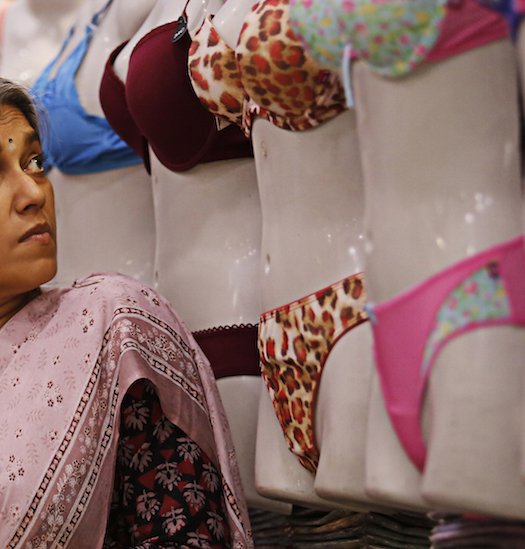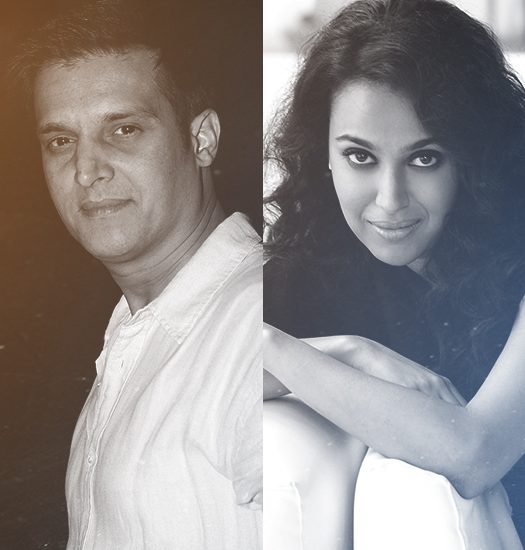My writing happens through my observations – Jass Grewal
Ever since Bambukat released, the Punjabi film industry as well as its viewers have woken to the magic of its writer Jass Grewal. This new toast of the town deserves all the adulation for he made viewers fall in love with every character that he wrote. Over a cup of tea, the three-film-old Grewal indulges us in a freewheeling chat like a long lost friend. Here are excerpts from the conversation.

Jass Grewal
Your recent film Bambukat became the fourth highest opener ever for a Punjabi film after Sardaarji, Sardaarji 2 and Ambarsariya. What lead to Bambukat’s success?
In Canada, Bambukat is the first Punjabi film to have the biggest opening ever. It is a complete family film. From a grandmother to a child, it is being liked by people of all age groups. I wanted to a write a film where one would be eager to take their parents and grandparents to watch it. In Bambukat, I have written things that use to excite me at the age of six, then as a teenager and now even when I’ve grown up. Therefore I feel Bambukat is a film for everyone.
READ: GOOD CHARACTERS LET THE AUDIENCE GET EASILY INVOLVED IN THE FILM – AMBERDEEP
How did the idea behind this unique story originate? What inspired it?
After writing my second film Farar, I didn’t want my next film to again be about judai (separation). I wanted to come up with a film where the couple gets married in the very beginning and are together for the rest of the story. I didn’t want them to keep struggling for their union but to unite them and then they struggle for what matters to them in life.
Initially it was a story of a dark-skinned girl who is struggling in her life because of her inbuilt fears cum insecurity as she feels that she isn’t attractive. It was a story of this girl whose inner child was disturbed during her childhood and how later her husband makes her feel beautiful. In the whole film she is trying to heal her inner child. The concept of Bambukat was added much later to it.
I think I wrote one of the simplest stories in the world – where the girl (played by Simi Chahal) is fighting a complex but for her husband (played by Ammy Virk), it doesn’t matter. To win his wife’s heart, Ammy ends up buying a stolen bike, which further leads him in jail. During his time in the jail, he creates a bike from waste material. I thought that people would find the idea very weird.
Then how did you find producers for it?
Amiek Virk, who is the producer of the film made his debut with Bamukat. He had approached me for a script. And when I narrated this thought to him, he immediately liked it. Though he is a first time producer, had he not been so dedicated, I don’t think that the film would have been so good. Unlike most Punjabi producers, he went into the depth of each and everything.
I feel that the story of Bambukat is God’s gift to me. The thought just struck my mind and when I narrated it to a friend, he really liked. And very randomly, the very next day, a producer approached me and he too liked it. At that time, it was just a thought; the script, screenplay and dialogues were developed much later. Moreover it was rare for any producer to be willing to launch a new hero.
READ: II DON’T WANT TO HAVE A PARTICULAR STYLE OF WRITING – MUNNA
Did you write the characters keeping the actors in mind?
Not really. Angrej hadn’t released by then so I hadn’t seen Ammy’s (Virk, actor) work. But after seeing Angrej, I felt that Ammy is a good actor and could be considered (for this film).

Bamukaat’s team (R-L: Writers Jatinder SIngh Lal & Jass Grewal, actors Binnu Dhillon, Sardar Sohi & Ammy Virk, producer Amiek Virk & distributor Manish Sahni)
Why did you place the story in an old era? Weren’t there chances of facing comparison to Angrej?
Bambukat’s story is more about a girl’s emotions. A story like this was possible in that era only. And Bambukat is placed in the mid 60s-70s whereas Angrej was in the pre-independence era.
Also I was quite confident about my story. I thought that even if people made any comparisons before seeing the film, their view would immediately change once they saw the film. A lot of people who heard the script said that it had many layers and colors. And I’ve always said that if I get Binnu Dhillon for a movie, I’ll create history. I’m a huge fan of his. We formed a good bond while working on Singh vs Kaur. I always knew that I would make a movie hit if I cast him in it.
Now that a lot of people have seen the film, I haven’t found anyone talking about the period. Everybody is complimenting the story. And they are relating to the film because they have seen these characters in their own house.
What are the challenges faced while writing a period film?
There are many challenges that you face while writing, conceiving and making a film set in an old era. After watching the film, my sister called me and said that the entire film was brilliant but it had one mistake in it. She told me that girls of that period didn’t use eyeliner (laughs).
During the shooting of the film, I would go and talk to senior artists who had seen that era to know more about the elements that were used at that time. Actors Sardar Sohi really helped me with his inputs. Another senior actor, Nirmal Rishi ma’am, helped me with the placement of the dupattas of the female artists. I would take them to her and ask her if they looked similar to girls from that era.
Even while writing the film, I did a lot of research. I asked my biji (grandmother) about a lot of things about that era. She told me that my dadaji (grandfather) used to have a bambukat. And the entire village would talk about it. ‘Bamboo Cart’ is basically an English word. Punjabis have modified it in their own way and started calling it Bambukat.
READ: A FILM SHOULD BE SUCH THAT IT SHOWS THE CHARACTER AS THE STAR – PANKAJ BATRA
Talk about the process of characterization and dialogues. How do you go about the character sketches, and what process is followed for the dialogues for each character?
If you visit any market in Nabha or any other place, you’ll get to see the exact same characters that were shown in my first film Jatt James Bond. Similarly if you go to any village house in Punjab, you’ll come across the same characters that you see in Bambukat. I have observed real life characters and then penned them in the script. In the entire film, there is no fictional character or anyone that I don’t know of. The character of the father in Bambukat is similar to my mamaji (maternal uncle). Binnu Dhillon’s character is also inspired by someone that I’ve seen.
The character of Pakko was my biggest concern. I knew that if we don’t find a good actor for that role, the film might suffer. When I met Simi Chahal, who played Pakko, I was completely relieved. I felt that we have got another Kajol. At times I tell her that I was just a channel; perhaps God wanted a role like this to reach her.
My writing happens through my observation. Now that I have met you, the character of a journalist and the body language has formed an image in my mind. If I’m writing a role of a journalist, I wouldn’t make it very bland. I will add things about the behavior and approach while writing that character.

Simi Chahal who played Pakko and Sheetal Thakur as Sammi
How closely are you involved in the making process once the shoot starts? Were there any alterations in the script or dialogues of this film on the floor?
I’m involved in each and every step. From how the female actors would place their dupattas to the kind of jewellery they should wear, to the number plate that the bikes should have; I looked into every minute detail.
I’d already kept some space in the script for actors like Binnu bhaji and Karamjeet Anmol as their comic timing is great. A famous dialogue, “Sami ik bulshit ji coffee bana ke leke aao,” was improvised on the spot. I wanted even the jokes to be such that they are remembered after a long time. Also, all the actors that we cast hailed from my region. I belong to Nabha and so do Binnu, Ammy, Karamjit Anmol, Nirmal and the others . And the chemistry between us showed in the improvisation. After the shoot, I was also closely involved in the dubbing – being very particular about each and every word that needs to be said.
How important is it for a writer to be on the set?
A writer’s presence really helps the film a lot. Either the director should also be the writer or the writer, who has written the script, has to be on the set. It is the most obvious thing. In my case, I fall in love with my scripts and then I don’t feel like making it dependent on someone else.
READ: PUNJABI INDUSTRY OPENED ITS DOORS TO MY WAY OF WORK
How and when did films enter your life?
I always wanted to be a director and wanted to make films. Films were a fantasy world for me. I used to be a great fan of Mohammad Rafi sahab. I would watch films for its songs and always remembered the names of the playback singer, but could not tell which actor it was picturised on. Then I started liking heroes such as Rajendra Kumar, Shammi Kapoor, Shashi Kapoor etc. And when I started understanding films, I realized that Sangam is my favourite film. Slowly I understood that Raj Kapoor is not just an actor but a lot more than that – from the songs in his film to the film itself. I wanted to be like him and started writing stories.
After doing my graduation from Khalsa College, Chandigarh in 2004, I went to Delhi and did a few modeling assignments but left immediately as it didn’t interest me. Then I went to Mumbai and joined a call centre. After working there for six months I left it and joined Nadira Babbar’s Ekjute Theatre Group. Theatre made me a writer. During my stint with theatre I got to know about Munshi Premchand, Saadat Hasan Manto and read them extensively.
Most Punjabi filmmakers complain that strong subjects don’t find an audience. After Bambukat’s success, would you agree that makers underestimate the audience?
The problem here is the creativity. There are times when people ask me whether these subjects will be accepted by the Punjabi audience? I just tell them that they are the same audience who watch films like PK, Piku, Brothers etc.
There are two types of makers – the ones who make films by watching other films and there are those who make films by observing real life. I recently got a call from someone who was keen to buy Bambukat’s rights for a Marathi remake. He asked me if the film would work in Maharashtra. I immediately told him that it won’t because the bonds, culture and relations vary from place to place. Maharashtrians wouldn’t understand the fiction between the saadoos (brother-in-laws).



